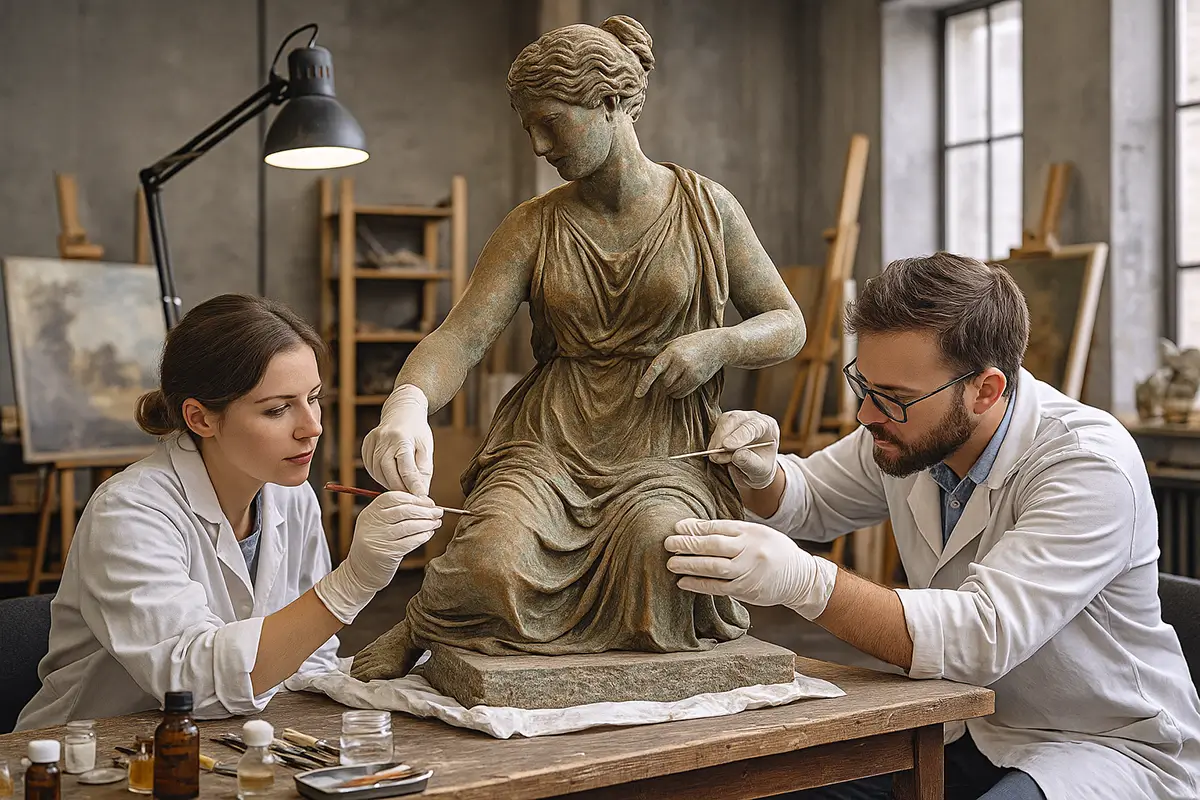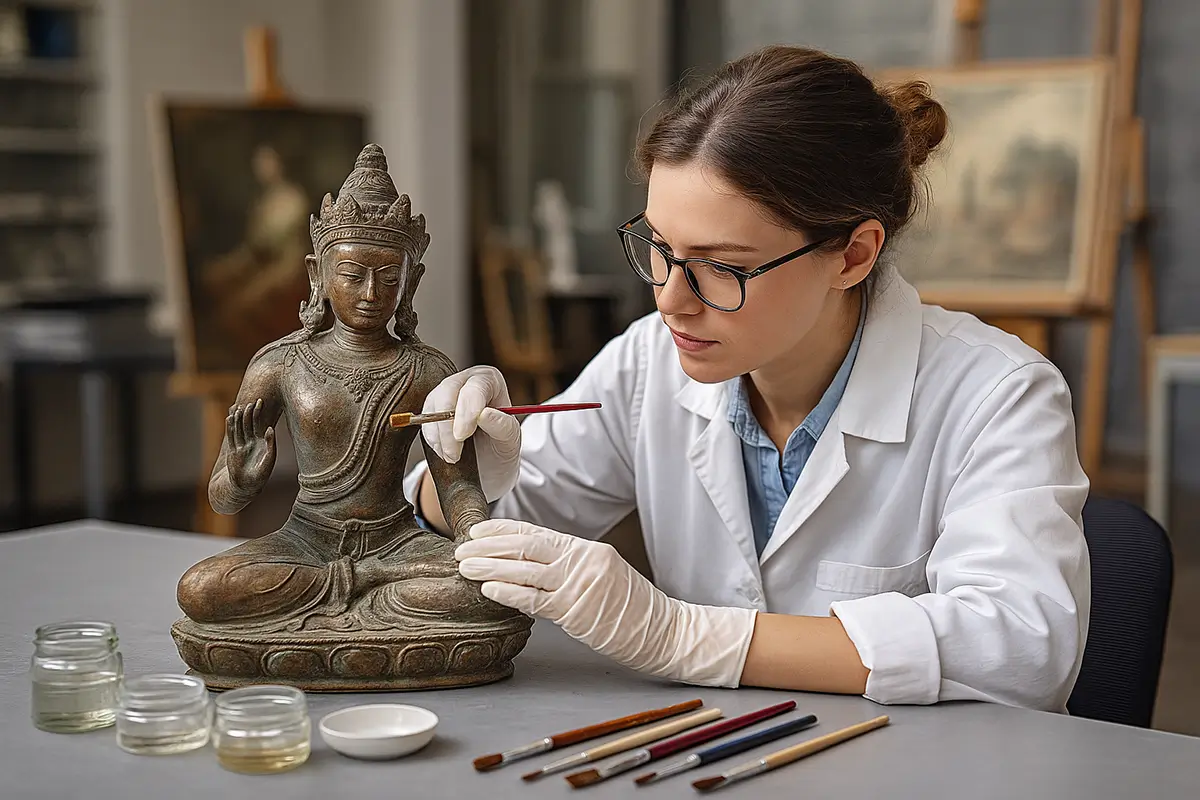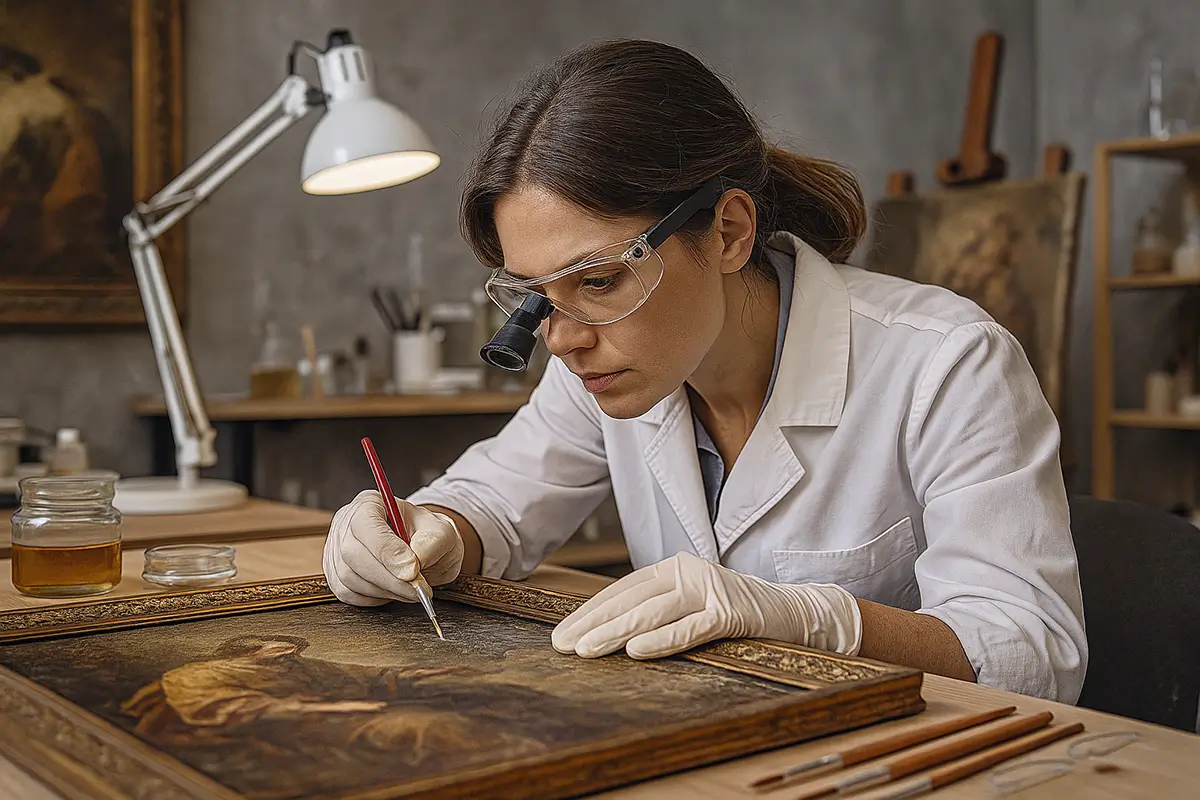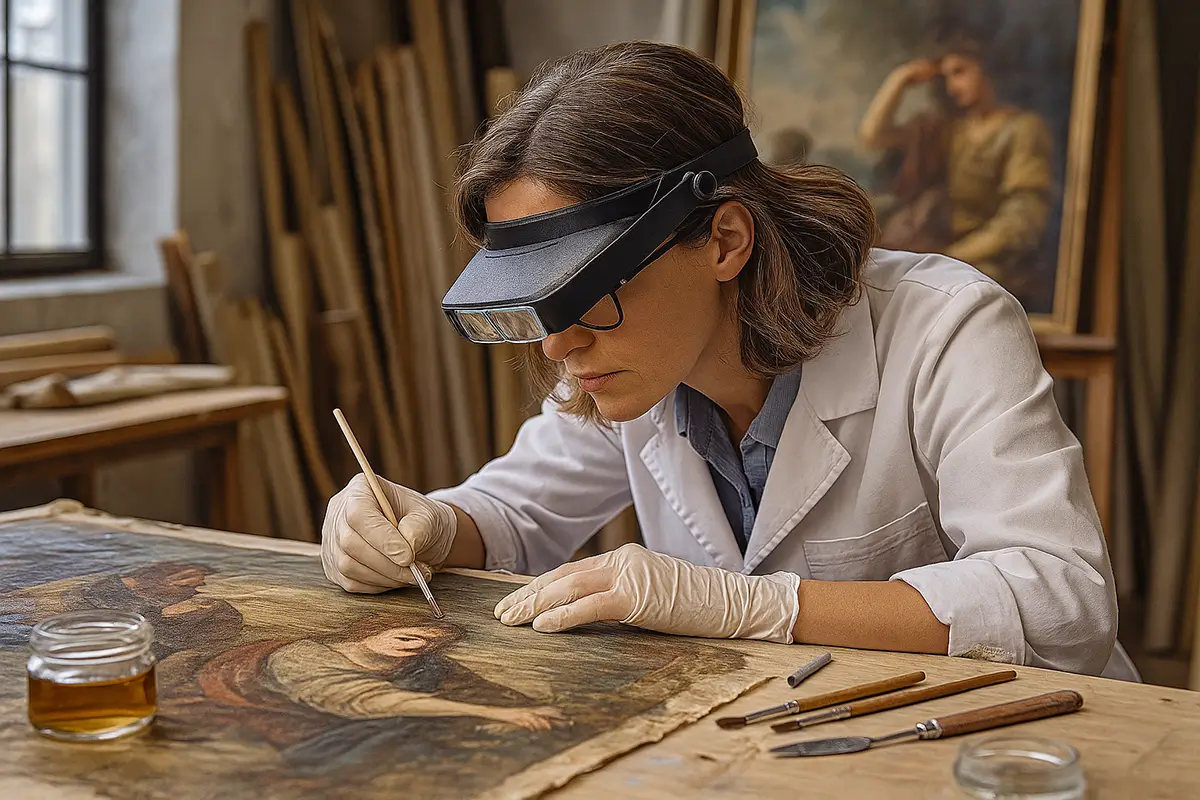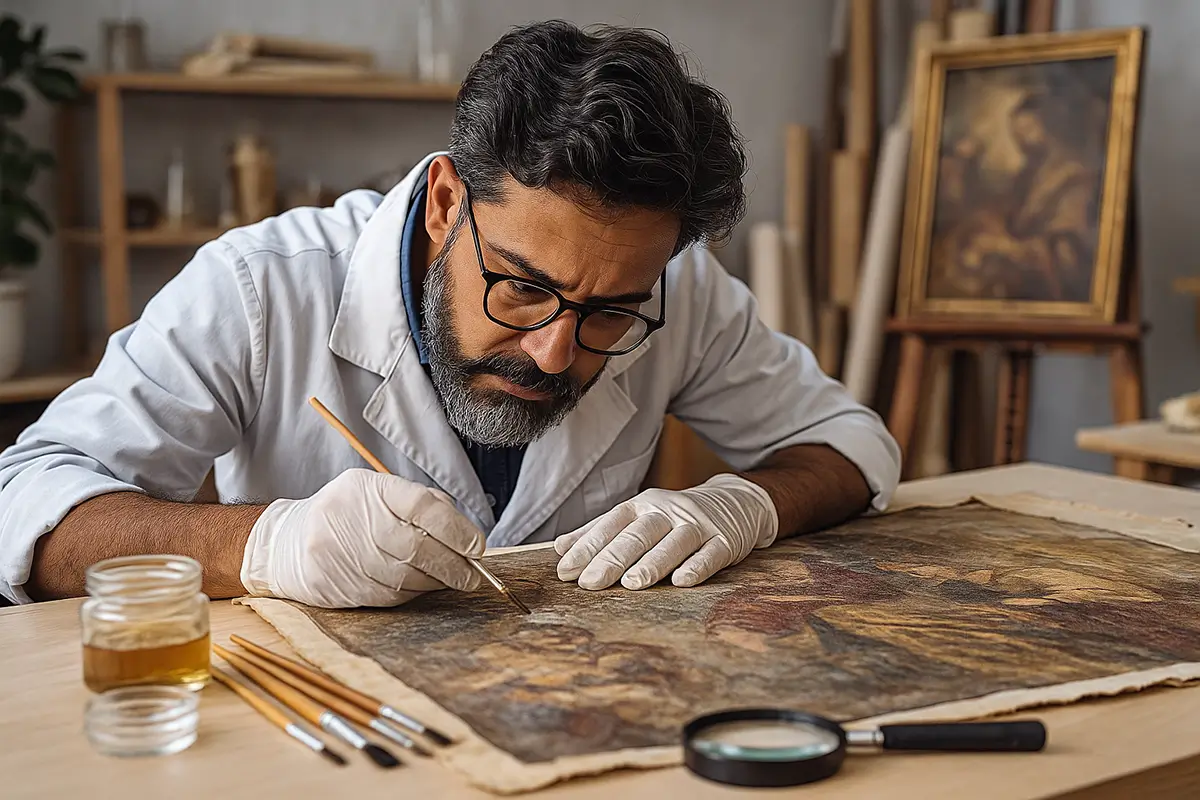Introduction: Art as an asset class for businesses
Across India, corporates are increasingly building significant art collections—whether through acquisitions of modern and contemporary works, commissioning public art for offices, or preserving cultural heritage assets inherited over time.
But while corporates often invest in buying art, fewer invest in preserving it. Art conservation and preservation are sometimes seen as cultural or philanthropic activities rather than business imperatives. In reality, corporate art is both a cultural responsibility and a financial asset.
This blog explores why companies should integrate conservation into their business strategy, how professional services make a difference, and the long-term value that preservation brings to corporate collections.
Art as a corporate asset
1. Financial investment
- High-value works by artists such as M.F. Husain, Raza, or Souza can appreciate significantly.
- Neglect leads to deterioration, lowering financial value.
2. Brand identity
- Art collections reflect corporate culture and vision.
- Well-preserved collections signal professionalism and cultural credibility.
3. Stakeholder engagement
- Art enhances workplaces, boosts employee pride, and strengthens public reputation.
- Cultural stewardship builds trust with clients and partners.
4. Compliance and insurance
- Art is treated as an asset class, requiring valuation, conservation, and insurance documentation.
Why conservation is a business priority
- Protecting investments
- Art values are tied to condition. Conservation protects financial worth.
- Managing reputational risk
- Displaying deteriorating art can harm brand image.
- Conserved collections enhance corporate credibility.
- Cultural leadership
- Corporates that conserve art become custodians of heritage, contributing to India’s cultural ecosystem.
- Future-proofing assets
- Preventive conservation lowers future restoration costs.
- Documentation and monitoring make collections easier to manage long term.
The Indian context: Challenges for corporate collections
- Climate risks: Offices in Mumbai or Chennai face humidity-related fungal damage.
- Pollution: Dust and chemical pollutants in Delhi and other metros degrade surfaces.
- Storage issues: Many corporates lack climate-controlled storage for large collections.
- Untrained handling: Office staff often move or clean artworks without conservation knowledge.
These risks make professional art conservation services essential for corporates.
Case studies: Corporates investing in conservation
Case 1: A multinational bank in India
The bank commissioned professional conservation for its extensive collection of Indian modern art. Treatments included cleaning, stabilisation, and preventive storage upgrades. The result: improved asset valuation and stronger brand perception as a patron of culture.
Case 2: A global consulting firm’s India offices
The firm invested in preventive conservation, installing UV-protected glass and humidity controls. Annual conservation reviews ensured that the collection stayed pristine.
Case 3: A large Indian conglomerate
A company with a heritage collection spanning textiles, sculptures, and paintings integrated conservation into its CSR and brand strategy. By presenting itself as a custodian of culture, it strengthened its global reputation.
The economics of conservation
Cost vs value
- Preventive conservation is far less costly than emergency restoration.
- Proper conservation can increase valuations by up to 20–30% for high-value works.
Insurance
- Conservation ensures eligibility for comprehensive art insurance policies.
- Insurers may lower premiums when preventive measures are in place.
Long-term asset management
- Conservation integrates with valuation and cataloging, creating a complete art asset management strategy.
Conservation as part of corporate social responsibility (CSR)
Under Indian law, corporates are mandated to spend a portion of profits on CSR. Conservation can fit into this framework:
- Cultural preservation projects qualify as CSR under heritage initiatives.
- Conservation aligns with sustainable business practices and ESG (Environmental, Social, Governance) goals.
- Investing in preservation demonstrates socially responsible leadership.
The role of professional conservation services
Corporate art collections require professional support that includes:
- Condition assessments for entire collections.
- Preventive conservation strategies tailored to office environments.
- Restoration treatments for damaged works.
- Documentation and reporting for audits, insurance, and valuations.
Best practices for corporates managing art
- Conduct annual conservation reviews.
- Control environment: Install UV filters, dehumidifiers, and air purifiers.
- Train staff in safe handling and cleaning protocols.
- Maintain digital catalogues with conservation histories.
- Integrate conservation with valuation and insurance planning.
Future of corporate art conservation in India
- Integration into asset management: Corporates will increasingly view art conservation as part of financial planning.
- Specialised service providers: Growing demand will expand professional conservation firms.
- Digitisation and AI monitoring: IoT sensors and AI will predict risks in real time.
- Public-private partnerships: Corporates may fund broader cultural conservation projects as part of CSR.
Conclusion: A strategic imperative, not a side project
For corporates, investing in art conservation is more than a cultural gesture—it is a strategic business decision. Conserved artworks retain financial value, strengthen brand identity, and position companies as responsible cultural leaders.
As Indian businesses expand collections, conservation must become a priority, not an afterthought. By adopting preventive care, partnering with professionals, and integrating conservation into CSR, corporates can ensure that their art assets remain protected and powerful.
Learn more about our Art Conservation Services. At TurmericEarth, we combine science, strategy, and cultural expertise to help corporates protect their collections—safeguarding both financial investments and cultural heritage.



